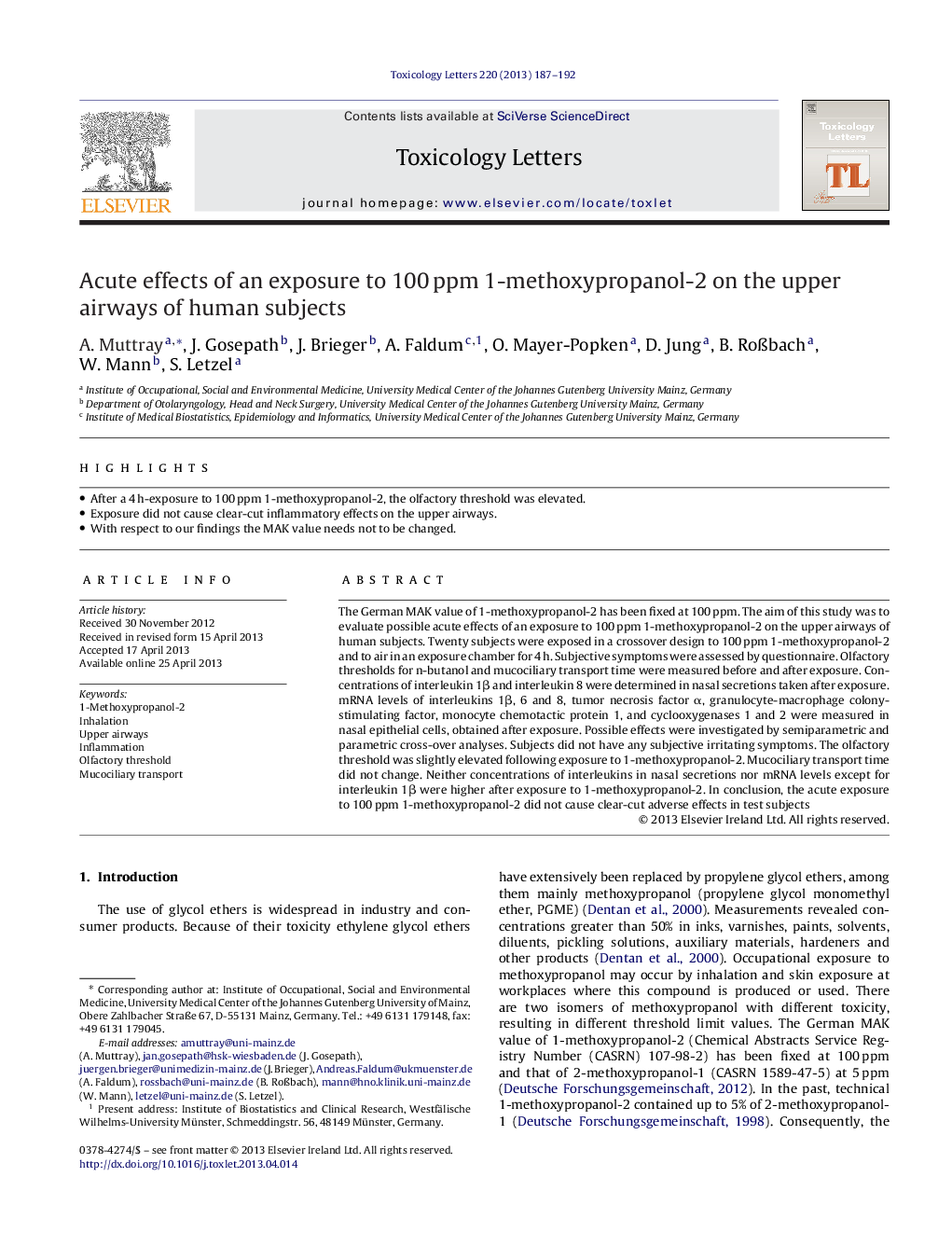| Article ID | Journal | Published Year | Pages | File Type |
|---|---|---|---|---|
| 2599189 | Toxicology Letters | 2013 | 6 Pages |
•After a 4 h-exposure to 100 ppm 1-methoxypropanol-2, the olfactory threshold was elevated.•Exposure did not cause clear-cut inflammatory effects on the upper airways.•With respect to our findings the MAK value needs not to be changed.
The German MAK value of 1-methoxypropanol-2 has been fixed at 100 ppm. The aim of this study was to evaluate possible acute effects of an exposure to 100 ppm 1-methoxypropanol-2 on the upper airways of human subjects. Twenty subjects were exposed in a crossover design to 100 ppm 1-methoxypropanol-2 and to air in an exposure chamber for 4 h. Subjective symptoms were assessed by questionnaire. Olfactory thresholds for n-butanol and mucociliary transport time were measured before and after exposure. Concentrations of interleukin 1β and interleukin 8 were determined in nasal secretions taken after exposure. mRNA levels of interleukins 1β, 6 and 8, tumor necrosis factor α, granulocyte-macrophage colony-stimulating factor, monocyte chemotactic protein 1, and cyclooxygenases 1 and 2 were measured in nasal epithelial cells, obtained after exposure. Possible effects were investigated by semiparametric and parametric cross-over analyses. Subjects did not have any subjective irritating symptoms. The olfactory threshold was slightly elevated following exposure to 1-methoxypropanol-2. Mucociliary transport time did not change. Neither concentrations of interleukins in nasal secretions nor mRNA levels except for interleukin 1β were higher after exposure to 1-methoxypropanol-2. In conclusion, the acute exposure to 100 ppm 1-methoxypropanol-2 did not cause clear-cut adverse effects in test subjects
